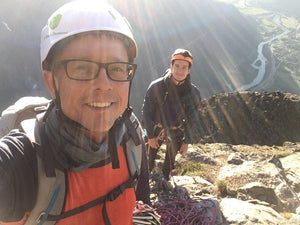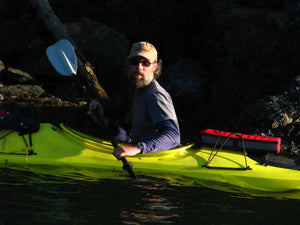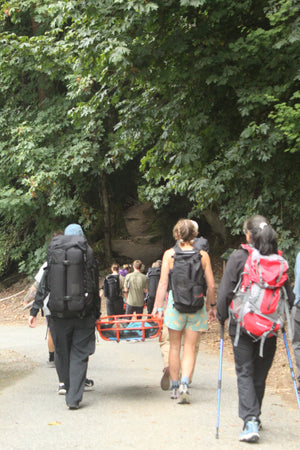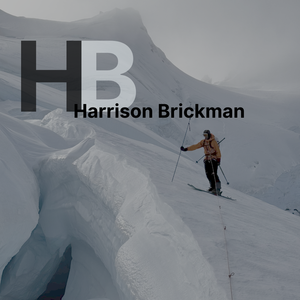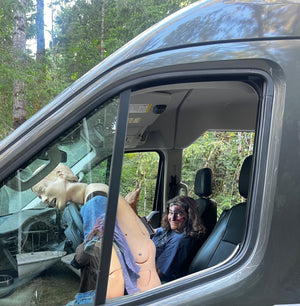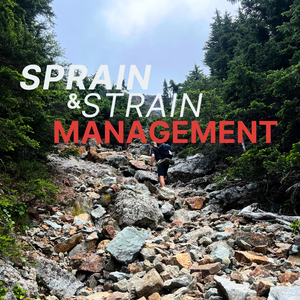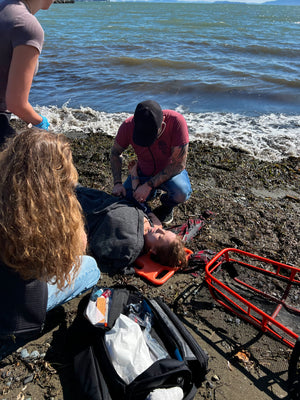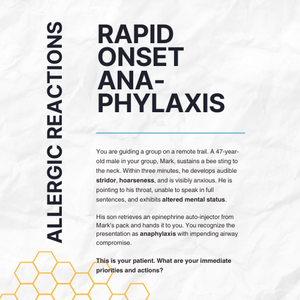Beyond the Backcountry: How Wilderness First Responder Skills Enhance Disaster Relief
Sep 12, 2025
When we think of a Wilderness First Responder (WFR), images of remote mountain ranges and deep forests often come to mind. However, the core principles of wilderness medicine—prolonged patient care, resource limitation, and environmental emergencies—are remarkably applicable to another challenging environment: the aftermath of a natural disaster. In the wake of a hurricane, earthquake, or flood, an urban or suburban landscape can quickly become an "austere environment," where traditional emergency medical services are overwhelmed and delayed for hours, if not days.
The effectiveness of WFR training in these scenarios lies in its fundamental departure from standard urban first aid. Urban emergency response is built on the premise of rapid stabilization and transport to a definitive care facility. Wilderness medicine, conversely, is built on the reality that you are the definitive care for an extended period. This mindset shift is crucial in disaster relief. A WFR is trained to think about long-term patient management, including hydration, nutrition, and psychological support, which are critical when professional help is not immediately available. As one study on disaster preparedness notes, community members are often the first on the scene, and their ability to provide effective initial care can significantly impact outcomes (Chan, 2017). The WFR curriculum directly equips individuals with these necessary skills.
Furthermore, WFR training heavily emphasizes improvisation and the use of limited resources. After a disaster, standard medical supplies are scarce. A WFR learns to splint a fracture with trekking poles and a sleeping pad, control bleeding with everyday materials, and build shelters to protect a patient from the elements. This skill set is invaluable when a fully stocked ambulance is inaccessible. Research into mass-casualty incidents highlights the importance of "resourcefulness and adaptability" among first responders, skills that are the bedrock of wilderness medical training (Ciottone, 2016, p. 25). The WFR’s ability to assess a scene, prioritize injuries (triage), and create functional medical tools from available debris makes them an incredible asset to community response teams.
Finally, the WFR patient assessment system is designed for chaos. It provides a systematic, repeatable method for evaluating a patient and identifying life threats, even with no prior medical history. In a disaster zone, where communication is down and records are lost, this structured approach ensures that nothing critical is missed. The training fosters a calm, methodical approach to care that is essential for managing the inherent stress of a post-disaster environment. By preparing individuals for the "prolonged field care" context, WFR certification provides a robust and adaptable framework for effective and compassionate aid when it is needed most.
References
Chan, E. Y. Y. (2017). The role of public health in disaster and disaster risk management. In Oxford Research Encyclopedia of Global Public Health. Oxford University Press. https://doi.org/10.1093/acrefore/9780190632366.013.21
Ciottone, G. R. (Ed.). (2016). Ciottone's Disaster Medicine (2nd ed.). Elsevier.
Johnson, D. E., Schimelpfenig, T., & The National Outdoor Leadership School. (2018). NOLS Wilderness Medicine (6th ed.). NOLS.
